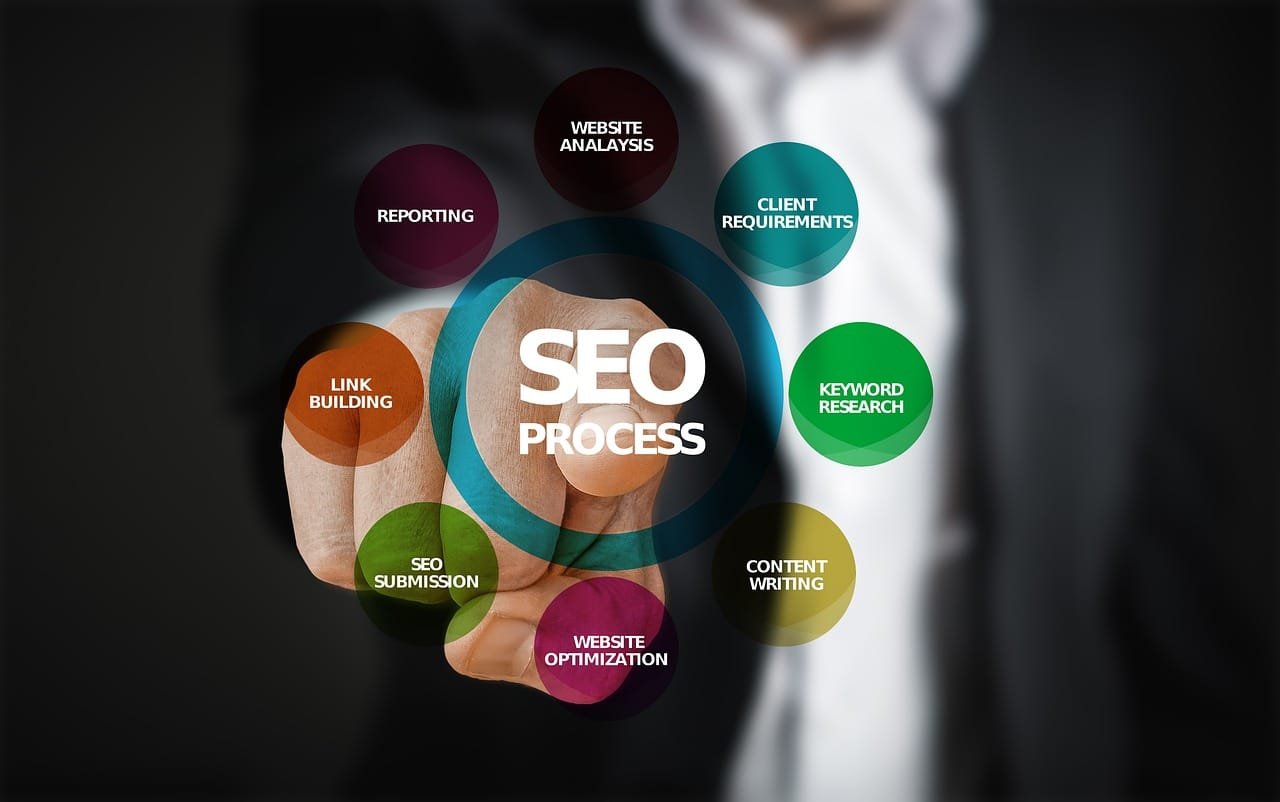This Article has been revised, edited and added to, by Poulomi Chakraborty.
- SEO vs. Paid Advertising: A Comparative Insight
- Core Components of SEO for B2C Marketplaces
- Off-Page SEO: Building Authority and Trust
- Measuring SEO Success: Key Metrics and Tools
- Organic Traffic: Tracking Your Visitors
- Bounce Rate: Understanding User Engagement
- Conversion Rate: Measuring Success in Sales
- Keyword Rankings: Monitoring Your Position
- Backlink Profile: Evaluating Your Authority
- Page Speed: Enhancing User Experience
- Mobile Usability: Catering to Mobile Users
- User Engagement: Keeping Your Audience Interested
- SEO Best Practices for B2C Marketplaces
- The Role of Content Marketing in SEO for B2C Marketplaces
- Conclusion: Embracing SEO for B2C Marketplaces
In today’s digital age, where online shopping has become a norm, B2C (Business-to-Consumer) marketplaces play a crucial role in connecting businesses with consumers. These platforms offer a vast array of products and services, making it convenient for consumers to find what they need with just a few clicks. However, for businesses, standing out in this crowded space can be challenging. This is where Search Engine Optimization (SEO) comes into play. SEO is the key to enhancing visibility, driving traffic, and ultimately increasing sales in B2C marketplaces.
SEO vs. Paid Advertising: A Comparative Insight

To understand the importance of SEO, it’s helpful to compare it with another popular digital marketing strategy: paid advertising. Both SEO and paid advertising aim to increase visibility and drive traffic, but they do so in fundamentally different ways.
Cost Efficiency and Sustainability
One of the most significant differences between SEO and paid advertising is cost efficiency and sustainability. Paid advertising, such as pay-per-click (PPC) campaigns, requires continuous investment.
Every click costs money, and when the budget runs out, so does the visibility. This can be effective for short-term promotions or immediate visibility, but it’s not sustainable in the long run without consistent funding.
On the other hand, SEO involves optimizing your website and content to rank organically in search engine results. While SEO does require an initial investment in terms of time and resources, the benefits are long-lasting.
Once your site ranks high for relevant keywords, it can continue to attract organic traffic without ongoing costs. This makes SEO a more cost-effective and sustainable strategy in the long run.
Trust and Credibility
Another area where SEO outshines paid advertising is in building trust and credibility. Consumers are becoming increasingly skeptical of ads. They know that paid ads are essentially businesses paying for their attention, which can sometimes come off as less trustworthy.
Organic search results, however, are perceived as more credible. When your website appears at the top of search results naturally, it signals to consumers that your site is a reputable source of information or products. This can significantly enhance your brand’s credibility and trustworthiness.
SEO also emphasizes high-quality content, which further builds trust. By providing valuable information that answers consumers’ questions or solves their problems, you establish your business as an authority in your industry. This not only drives traffic but also encourages repeat visits and customer loyalty.
Long-term Benefits vs. Immediate Results
Paid advertising can deliver immediate results. Launch a PPC campaign, and you can start seeing traffic and conversions right away. This immediacy is beneficial for short-term goals, such as product launches or time-sensitive promotions. However, once the campaign ends, the traffic usually drops off quickly.
SEO, in contrast, is a long-term strategy. It takes time to see significant results, as it involves optimizing your site, creating quality content, and building backlinks. However, the traffic generated through SEO tends to be more consistent and sustainable.
Once you achieve high rankings, maintaining them requires less effort than starting from scratch with a new ad campaign. Over time, the cumulative benefits of SEO can far outweigh the initial investment.
Targeted Reach and User Experience
SEO also excels in providing a more targeted reach and enhancing user experience. By optimizing for specific keywords, you attract visitors who are actively searching for what you offer, making them more likely to convert.
Moreover, SEO involves improving site structure, navigation, and loading speeds, all of which contribute to a better user experience. A well-optimized site not only ranks higher but also keeps visitors engaged and encourages them to explore more pages, reducing bounce rates and increasing the likelihood of conversions.
In comparison, paid advertising allows for targeting based on demographics, interests, and behavior, which can be highly effective. However, it does not inherently improve the user experience on your site. An ad might bring a visitor to your site, but if the site is slow or difficult to navigate, the visitor is unlikely to stay or convert.
SEO: A Strategic Advantage
In summary, while paid advertising offers immediate visibility and can be highly effective for short-term goals, SEO provides a more sustainable, cost-effective, and trust-building approach. By investing in SEO, B2C businesses can achieve long-term growth, enhanced credibility, and a better user experience. These benefits make SEO an indispensable strategy for any B2C marketplace looking to thrive in the competitive digital landscape.
Core Components of SEO for B2C Marketplaces

SEO is a multifaceted discipline that involves various strategies and techniques. Understanding and implementing these core components is crucial for B2C marketplaces to improve their online visibility and attract organic traffic.
Keyword Research: The Foundation of SEO
Keyword research is the cornerstone of any successful SEO strategy. It involves identifying the words and phrases that potential customers use when searching for products or services similar to what you offer. By targeting these keywords, you can optimize your content to match user intent and improve your chances of ranking higher in search engine results.
Importance of Targeting the Right Keywords
Choosing the right keywords is critical. If you target keywords that are too broad, you may face stiff competition from larger, more established brands. On the other hand, if your keywords are too niche, you might not attract enough traffic to make a significant impact. The goal is to find a balance between search volume and competition.
Long-tail keywords, which are more specific phrases that typically contain three or more words, are often a good choice for B2C marketplaces. They may have lower search volumes, but they tend to attract more qualified leads—customers who are further along in the buying process and more likely to convert.
Tools and Techniques for Keyword Research
Several tools can help with keyword research, each offering unique features. Google Keyword Planner, Ahrefs, SEMrush, and Ubersuggest are some of the most popular options. These tools provide data on search volume, keyword difficulty, and related keywords, helping you to identify the best terms to target.
Additionally, analyzing competitors’ keywords can offer valuable insights. Tools like Ahrefs and SEMrush allow you to see which keywords your competitors are ranking for, giving you ideas for your own keyword strategy. By understanding what works for others in your industry, you can refine your approach and identify opportunities to outperform them.
On-Page SEO: Optimizing Individual Pages
On-page SEO refers to optimizing individual web pages to rank higher and earn more relevant traffic. This involves various elements, including content, HTML tags, and images. Effective on-page SEO ensures that search engines can easily understand the content of your pages and index them appropriately.
Crafting High-Quality Content
Content is the heart of on-page SEO. High-quality, informative, and engaging content not only attracts visitors but also keeps them on your site longer, reducing bounce rates and increasing the likelihood of conversions. Your content should address the needs and interests of your target audience, providing them with valuable information that helps them make informed decisions.
Including keywords naturally in your content is essential, but avoid keyword stuffing, which can harm your rankings and degrade the user experience. Instead, focus on creating content that flows naturally and provides real value to your readers. Incorporate keywords in strategic places, such as titles, headings, and the first 100 words of your text.
Optimizing HTML Tags
HTML tags, including title tags, meta descriptions, and header tags, play a significant role in on-page SEO. Title tags should be concise, descriptive, and include your primary keyword. They appear in search engine results as the clickable headline, so crafting compelling titles can improve click-through rates.
Meta descriptions provide a brief summary of your page content and should also include your primary keyword. While meta descriptions do not directly impact rankings, they influence user behavior by enticing searchers to click on your link. Writing clear, informative, and engaging meta descriptions can significantly boost your click-through rates.
Header tags (H1, H2, H3, etc.) structure your content, making it easier for both users and search engines to read and understand. The H1 tag should include your primary keyword and clearly indicate the main topic of the page. Use H2 and H3 tags to break down your content into logical sections, incorporating secondary keywords where appropriate.
Technical SEO: Ensuring Your Site is Search Engine Friendly
Technical SEO focuses on the behind-the-scenes aspects of your website that impact its performance and visibility. Ensuring that your site is technically sound is crucial for effective SEO, as it helps search engines crawl, index, and rank your pages.
Site Speed and Performance
Site speed is a critical factor in both user experience and search engine rankings. A slow-loading website can frustrate visitors, leading to higher bounce rates and lower engagement. Search engines prioritize fast-loading sites, so optimizing your site speed is essential.
Several techniques can improve site speed, including optimizing images, minimizing the use of heavy scripts, and leveraging browser caching. Tools like Google PageSpeed Insights can help you identify areas for improvement and provide recommendations for enhancing performance.
Mobile Optimization
With the increasing use of mobile devices for internet browsing, having a mobile-friendly website is more important than ever. Google uses mobile-first indexing, meaning it primarily uses the mobile version of your site for ranking and indexing. Ensuring that your site is responsive and provides a seamless experience on all devices is crucial.
A responsive design automatically adjusts to fit different screen sizes, ensuring that your site is easy to navigate and read on smartphones and tablets. Test your site on various devices to ensure it performs well and remains user-friendly across all platforms.
Secure Sockets Layer (SSL) and HTTPS
Security is a significant aspect of technical SEO. An SSL certificate encrypts data transmitted between your website and users, protecting sensitive information and enhancing trust. Websites with HTTPS rather than HTTP are prioritized by search engines, as they offer a secure browsing experience.
Obtaining an SSL certificate is straightforward, and many hosting providers offer it as part of their service. Once installed, ensure that all pages on your site use HTTPS, and set up 301 redirects from HTTP to HTTPS to avoid any potential loss of traffic.
Off-Page SEO: Building Authority and Trust

Off-page SEO involves activities that take place outside your website but significantly impact your site’s rankings and visibility. Building authority and trust through off-page SEO strategies is essential for enhancing your site’s credibility and driving organic traffic.
Backlinks: The Backbone of Off-Page SEO
Backlinks are links from other websites to your site. They are one of the most influential ranking factors in search engine algorithms. High-quality backlinks act as votes of confidence, signaling to search engines that your content is valuable and authoritative.
Earning High-Quality Backlinks
Earning high-quality backlinks involves creating content that others find valuable enough to link to. This can be achieved through various methods, such as producing in-depth articles, conducting original research, or creating engaging multimedia content.
Building relationships with industry influencers and participating in guest blogging can also help in acquiring backlinks.
It’s important to focus on quality over quantity. A few links from reputable sites are more valuable than many links from low-quality or irrelevant sites. Tools like Ahrefs and SEMrush can help you analyze your backlink profile and identify opportunities for improvement.
Social Signals: Leveraging Social Media
Social signals, such as likes, shares, and comments on social media platforms, can indirectly impact your SEO efforts. While social signals themselves are not direct ranking factors, they contribute to the overall visibility and engagement of your content.
A strong social media presence can drive traffic to your website, increase brand awareness, and potentially lead to more backlinks.
Engaging with your audience on social media and sharing high-quality content can amplify your reach and encourage others to link to your site. Additionally, being active on social media platforms can help you stay connected with your audience and build a loyal community around your brand.
Online Reviews and Reputation Management
Online reviews and reputation management play a crucial role in off-page SEO. Positive reviews on platforms like Google My Business, Yelp, and industry-specific review sites can enhance your brand’s credibility and trustworthiness. Encouraging satisfied customers to leave positive reviews and addressing negative feedback promptly can improve your online reputation.
A strong online reputation not only attracts more customers but also signals to search engines that your business is reputable and reliable. Managing your online reviews and actively engaging with customers can contribute to better search engine rankings and increased organic traffic.
Local SEO: Targeting Local Consumers
For B2C businesses with a physical presence, local SEO is essential for attracting local consumers. Local SEO focuses on optimizing your online presence to attract more business from relevant local searches.
This involves optimizing your Google My Business profile, ensuring your business information is accurate and consistent across online directories, and acquiring local backlinks.
Optimizing for local SEO includes using location-based keywords, creating localized content, and encouraging customers to leave reviews on local review sites. Engaging with your local community through events, partnerships, and sponsorships can also enhance your local SEO efforts.
Content Marketing: Creating Valuable Content
Content marketing is a powerful off-page SEO strategy that involves creating and distributing valuable content to attract and engage your target audience. High-quality content can naturally attract backlinks, social shares, and engagement from your audience.
By consistently producing informative and engaging content, you can establish your brand as an authority in your industry and drive organic traffic to your site.
Content marketing includes blog posts, articles, videos, infographics, podcasts, and other forms of content that provide value to your audience. By addressing the needs and interests of your target audience, you can create content that resonates with them and encourages them to share and link to your site.
Influencer Marketing: Collaborating with Influencers
Influencer marketing involves partnering with individuals who have a significant following and influence in your industry. Collaborating with influencers can help you reach a wider audience, increase brand awareness, and attract more traffic to your site.
Influencers can create content that features your products or services, share it with their followers, and provide valuable backlinks to your site.
Building relationships with influencers and leveraging their reach can enhance your off-page SEO efforts and drive more organic traffic to your site. Influencer marketing can also boost your brand’s credibility and trustworthiness, as consumers often trust recommendations from individuals they follow and admire.

Measuring SEO Success: Key Metrics and Tools
To understand the effectiveness of your SEO efforts, it’s crucial to measure and analyze the right metrics. Monitoring these key performance indicators (KPIs) helps you determine what’s working, identify areas for improvement, and refine your strategy for better results.
Organic Traffic: Tracking Your Visitors
Organic traffic refers to visitors who find your website through search engine results rather than through paid ads or direct visits. It’s a primary indicator of your SEO success. An increase in organic traffic suggests that your SEO strategies are effectively improving your visibility in search engines.
To track organic traffic, tools like Google Analytics are invaluable. Google Analytics provides detailed insights into your traffic sources, allowing you to see how many visitors are coming from search engines, which keywords they used, and which pages they visited. This information helps you understand which aspects of your SEO strategy are driving the most traffic.
Bounce Rate: Understanding User Engagement
Bounce rate is the percentage of visitors who leave your site after viewing only one page. A high bounce rate can indicate that your content or user experience is not meeting visitors’ expectations.
Improving your bounce rate often involves enhancing your website’s usability, providing more engaging content, and ensuring that your pages are relevant to the search queries that bring visitors to your site.
Google Analytics can help you monitor your bounce rate and identify pages with high exit rates. By analyzing this data, you can make informed decisions about how to improve your content and site structure to better engage your audience.
Conversion Rate: Measuring Success in Sales
For B2C businesses, the ultimate goal of SEO is to drive conversions, whether that’s making a sale, generating a lead, or encouraging some other action. Conversion rate is the percentage of visitors who complete a desired action on your site. Tracking conversions helps you measure the direct impact of your SEO efforts on your business goals.
To track conversions, you can set up goals in Google Analytics. These goals can be as simple as tracking form submissions or as complex as monitoring the entire sales funnel. Understanding which keywords and pages are driving the most conversions allows you to focus your SEO efforts on the most effective strategies.
Keyword Rankings: Monitoring Your Position
Tracking your keyword rankings helps you see how well your site is performing in search engine results for specific keywords. Improving your rankings for targeted keywords can lead to increased visibility and more organic traffic. Regularly monitoring your rankings allows you to assess the effectiveness of your SEO tactics and adjust your strategy as needed.
Several tools, such as Ahrefs, SEMrush, and Moz, provide comprehensive keyword tracking features. These tools allow you to monitor your rankings over time, compare your performance to competitors, and identify new keyword opportunities.
Backlink Profile: Evaluating Your Authority
Your backlink profile refers to the quantity and quality of backlinks pointing to your site. A strong backlink profile can significantly enhance your search engine rankings and overall authority. Monitoring your backlinks helps you understand how well your content is being received and identify opportunities for building more links.
Tools like Ahrefs, SEMrush, and Moz can help you analyze your backlink profile. These tools provide insights into the number of backlinks, the quality of linking sites, and the anchor text used. By regularly reviewing your backlink profile, you can identify and disavow any low-quality links that might harm your SEO efforts.
Page Speed: Enhancing User Experience
Page speed is a crucial factor in both user experience and search engine rankings. A slow-loading website can lead to high bounce rates and lower engagement. Monitoring your page speed and making necessary optimizations can improve user satisfaction and boost your search rankings.
Google PageSpeed Insights is a useful tool for analyzing your site’s speed and performance. It provides specific recommendations for improving load times, such as optimizing images, leveraging browser caching, and minimizing JavaScript.
Mobile Usability: Catering to Mobile Users
With the rise of mobile internet usage, ensuring your site is mobile-friendly is essential. Mobile usability refers to how well your site performs on mobile devices. A mobile-friendly site provides a better user experience and can positively impact your search engine rankings.
Google’s Mobile-Friendly Test tool allows you to check how easily a visitor can use your page on a mobile device. It provides recommendations for improving mobile usability, such as using responsive design, improving load times, and ensuring that buttons and links are easy to tap.
User Engagement: Keeping Your Audience Interested
User engagement metrics, such as average session duration, pages per session, and social shares, provide insights into how visitors interact with your site. High engagement indicates that your content is resonating with your audience, while low engagement can signal areas for improvement.
Google Analytics offers detailed reports on user engagement, helping you understand how visitors navigate your site and which content keeps them interested. By analyzing these metrics, you can identify high-performing content and replicate its success across other pages.
SEO Best Practices for B2C Marketplaces

Implementing SEO best practices is essential for maximizing your website’s visibility and driving organic traffic. These practices ensure that your site is optimized for both search engines and users, providing a seamless experience that encourages engagement and conversions.
Creating High-Quality Content
Content is the cornerstone of SEO. High-quality content not only attracts visitors but also keeps them engaged and encourages them to return. For B2C marketplaces, creating content that is informative, engaging, and relevant to your audience’s needs is crucial.
To create high-quality content, start by understanding your target audience. Conduct research to identify their interests, pain points, and search behaviors. Use this information to develop content that addresses their needs and provides valuable solutions. This can include blog posts, product descriptions, how-to guides, videos, and infographics.
Incorporate keywords naturally into your content, ensuring they fit seamlessly within the text. Focus on providing value rather than simply trying to rank for specific terms. High-quality content should be well-written, free of grammatical errors, and structured in a way that is easy to read and understand.
Optimizing for User Experience
User experience (UX) plays a significant role in SEO. A website that is easy to navigate and provides a positive experience for visitors is more likely to rank well in search engines. Optimizing for UX involves several elements, including site structure, navigation, and page load times.
Ensure that your site has a clear and logical structure, making it easy for users to find what they are looking for. Use intuitive navigation menus, clear headings, and internal links to guide visitors through your site. A well-structured site not only improves user experience but also helps search engines crawl and index your pages more effectively.
Page load times are critical for user experience. A slow-loading site can frustrate visitors and lead to high bounce rates. Optimize your site’s performance by compressing images, minimizing the use of heavy scripts, and leveraging browser caching. Tools like Google PageSpeed Insights can help you identify and address performance issues.
Mobile Optimization
With more people using mobile devices to browse the internet, ensuring your site is mobile-friendly is essential. Google uses mobile-first indexing, meaning it predominantly uses the mobile version of your site for ranking and indexing. A mobile-optimized site provides a seamless experience for users on smartphones and tablets.
Implement a responsive design that adjusts to different screen sizes, ensuring that your site looks and functions well on all devices. Test your site on various mobile devices to identify and fix any usability issues. Ensure that buttons and links are easy to tap, and that text is readable without zooming.
Leveraging Schema Markup
Schema markup, also known as structured data, helps search engines understand the content of your site more effectively. It provides additional information about your pages, such as product details, reviews, and business information, in a standardized format.
Implementing schema markup can enhance your search results with rich snippets, which are more visually appealing and informative. Rich snippets can increase click-through rates and drive more traffic to your site. Use tools like Google’s Structured Data Markup Helper to add schema markup to your pages.
Building a Strong Internal Linking Structure
Internal linking involves linking to other pages on your site. A strong internal linking structure helps search engines understand the hierarchy and relationships between your pages, improving crawlability and indexation.
Internal links also keep visitors engaged by guiding them to related content. Use descriptive anchor text that includes relevant keywords to help search engines and users understand the context of the linked page. Ensure that your most important pages receive the most internal links to signal their importance to search engines.
Prioritizing Local SEO
For B2C marketplaces with a physical presence, local SEO is essential for attracting local customers. Optimizing for local search involves several strategies, including creating localized content, acquiring local backlinks, and managing your online reputation.
Optimize your Google My Business profile by ensuring that all information is accurate and up-to-date. Encourage satisfied customers to leave positive reviews, as reviews are a key ranking factor for local search. Use location-based keywords in your content and meta descriptions to attract local searchers.
Monitoring and Adapting Your SEO Strategy
SEO is an ongoing process that requires regular monitoring and adaptation. Search engine algorithms are constantly evolving, and staying updated with the latest trends and best practices is essential for maintaining and improving your rankings.
Use tools like Google Analytics and Google Search Console to track your SEO performance and identify areas for improvement. Regularly review key metrics such as organic traffic, bounce rates, and conversion rates to assess the effectiveness of your strategy. Make data-driven decisions to refine and enhance your SEO efforts.
Engaging with the SEO Community
The SEO community is a valuable resource for staying informed about the latest developments and best practices. Engaging with the community through forums, webinars, and social media can provide insights and support for your SEO efforts.
Follow industry blogs and participate in discussions to learn from experts and peers. Sharing your experiences and knowledge can also help you build relationships and establish yourself as an authority in your field.
The Role of Content Marketing in SEO for B2C Marketplaces

Content marketing and SEO go hand in hand. High-quality content is essential for SEO, and effective SEO strategies enhance the visibility and reach of your content. For B2C marketplaces, content marketing can drive traffic, engage customers, and build brand loyalty.
Understanding Content Marketing
Content marketing involves creating and distributing valuable, relevant, and consistent content to attract and engage a clearly defined audience. The goal is to provide useful information that helps your audience solve problems or make informed decisions, ultimately driving profitable customer actions.
For B2C marketplaces, this could mean producing blog posts, videos, infographics, and social media content that address the needs and interests of your target customers. By providing value through content, you can build trust and credibility, encouraging visitors to return to your site and make purchases.
Creating a Content Strategy
A well-defined content strategy is crucial for effective content marketing. Start by identifying your target audience and understanding their needs, preferences, and pain points. This will help you create content that resonates with them and addresses their specific challenges.
Next, establish clear goals for your content marketing efforts. Whether you aim to drive traffic, generate leads, increase sales, or build brand awareness, having specific objectives will guide your content creation and distribution efforts.
Plan your content calendar by outlining the topics you will cover, the formats you will use, and the channels through which you will distribute your content. Consistency is key, so ensure you have a regular posting schedule that keeps your audience engaged and coming back for more.
Optimizing Content for SEO
Creating high-quality content is just the first step. To ensure your content reaches a wider audience, it’s essential to optimize it for SEO. This involves incorporating relevant keywords, structuring your content effectively, and ensuring it provides value to both search engines and users.
Start by conducting keyword research to identify the terms your target audience is using to find information related to your products or services. Integrate these keywords naturally into your content, including in titles, headings, and throughout the body text.
Use header tags (H1, H2, H3) to structure your content and make it easy to read. Each header should include relevant keywords and clearly indicate the main points of the section. This helps search engines understand the hierarchy and relevance of your content.
In addition to keywords, focus on providing valuable and informative content that answers your audience’s questions and solves their problems. High-quality content that meets the needs of your audience is more likely to rank well in search engines and attract organic traffic.
Promoting Your Content
Once you have created and optimized your content, the next step is to promote it. Content promotion helps increase visibility, drive traffic, and generate engagement. There are several effective ways to promote your content:
- Social Media: Share your content on social media platforms where your target audience is active. Use engaging captions, images, and hashtags to increase visibility and encourage shares.
- Email Marketing: Send your content to your email subscribers. Personalized emails with valuable content can drive traffic to your site and keep your audience engaged.
- Influencer Collaborations: Partner with influencers in your industry to share your content with their followers. Influencers can amplify your reach and lend credibility to your content.
- Guest Blogging: Write guest posts for reputable websites in your industry. Include links back to your site to drive traffic and improve your backlink profile.
- Paid Promotion: Use paid advertising, such as sponsored posts or pay-per-click campaigns, to promote your content to a wider audience.
Measuring Content Marketing Success
To evaluate the effectiveness of your content marketing efforts, it’s important to measure key performance indicators (KPIs). These metrics will help you understand what’s working and where there is room for improvement.
Key metrics to track include:
- Organic Traffic: Monitor the amount of traffic coming to your site from search engines. An increase in organic traffic indicates that your content is effectively attracting visitors.
- Engagement: Measure how users interact with your content. Metrics such as time on page, bounce rate, and social shares provide insights into how engaging your content is.
- Conversion Rate: Track the percentage of visitors who take a desired action, such as making a purchase or signing up for a newsletter. This helps you understand how well your content is driving conversions.
- Backlinks: Monitor the number and quality of backlinks to your content. High-quality backlinks can improve your search rankings and drive more traffic to your site.
Adapting Your Content Strategy
Content marketing is an ongoing process that requires regular evaluation and adaptation. Use the insights gained from measuring your KPIs to refine your content strategy. Identify the types of content that perform best and focus on creating more of what resonates with your audience.
Stay updated with the latest trends and best practices in content marketing and SEO. The digital landscape is constantly evolving, and staying informed will help you maintain a competitive edge.
Engage with your audience to understand their changing needs and preferences. Regularly solicit feedback and use it to improve your content and marketing efforts. By continuously adapting and optimizing your content strategy, you can drive sustained growth and success for your B2C marketplace.
Conclusion: Embracing SEO for B2C Marketplaces
In the competitive landscape of B2C marketplaces, SEO is not just an option but a necessity. It plays a pivotal role in enhancing visibility, driving organic traffic, and ultimately increasing sales. By focusing on key components such as keyword research, on-page optimization, technical SEO, and content marketing, businesses can create a robust online presence.
The synergy between SEO and content marketing, supported by a strong backlink profile and positive user experience, helps build trust and credibility. Regularly measuring performance and adapting strategies ensures continuous improvement and sustained success. Embracing SEO as a core part of your digital strategy will position your B2C marketplace for long-term growth and a competitive edge in the digital world.
READ NEXT:
- User-Centric SEO for SaaS: Balancing Technology and User Experience
- Keyword Research for SaaS: Identifying Industry-Specific Terms
- SaaS Video Demos and SEO: Engaging Users through Video
- SEO Strategies for SaaS Companies: Optimizing Digital Solutions
- Role of User Experience (UX) in SEO: What the Data Says






















Comments are closed.